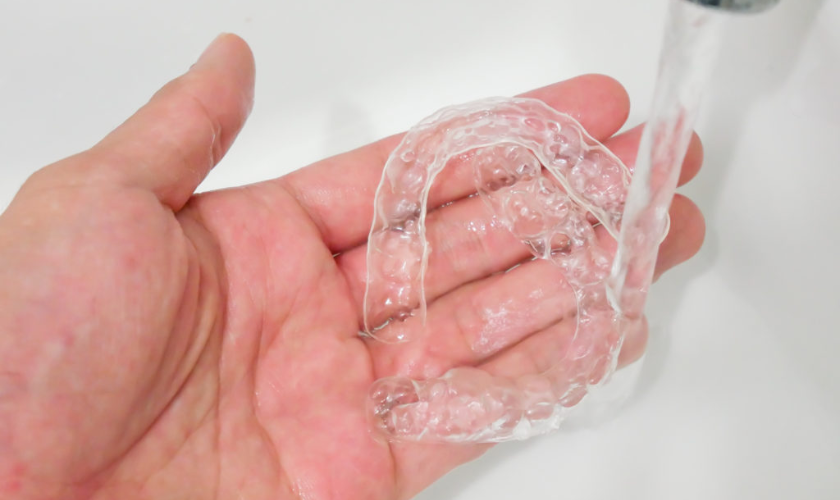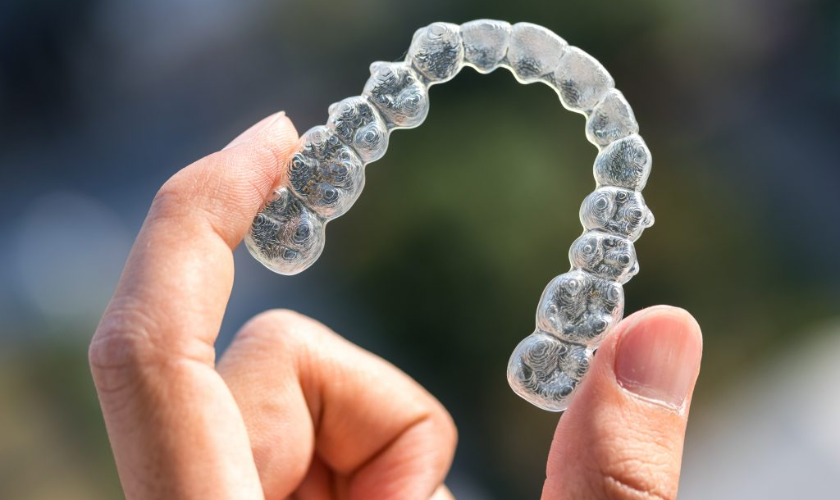Invisalign aligners are a popular choice for straightening teeth, offering a discreet and convenient alternative to traditional braces. While they’re designed to be durable and comfortable, proper care is essential to ensure they remain effective throughout your treatment journey. In this guide, we’ll walk you through everything you need to know about caring for your Invisalign aligners, from cleaning tips to maintenance routines.
Why Proper Care Matters
Taking care of your Invisalign aligners is crucial for several reasons:
- Hygiene: Keeping your aligners clean helps prevent the buildup of bacteria, plaque, and tartar, which can lead to tooth decay, bad breath, and gum disease.
- Effectiveness: Maintaining your aligners in good condition ensures they can effectively shift your teeth into their desired position, helping you achieve optimal results from your treatment.
- Comfort: Clean aligners are more comfortable to wear, reducing the risk of irritation and discomfort in your mouth.
- Appearance: Clear aligners are designed to be discreet, and proper care helps maintain their transparency, ensuring they remain virtually invisible while you wear them.
Cleaning Your Aligners
Proper cleaning is key to keeping your Invisalign aligners clear, odor-free, and hygienic. Here’s how to clean them effectively:
1. Rinse After Removal
After removing your aligners, rinse them under lukewarm water to remove saliva and any food particles. Avoid using plastic in hot water since it can deform it.
2. Brush Gently
Use a soft-bristled toothbrush and a mild, clear, antibacterial soap to gently brush your aligners. Avoid colored or scented soaps, as they may stain or leave a residue on the aligners.
3. Soak Daily
Soaking your aligners in a denture cleaner or specialized Invisalign cleaning crystals can help remove stubborn stains and bacteria. For the correct amount of dilution and soaking time, according to the manufacturer’s instructions.
4. Avoid Harsh Cleaners
Avoid using toothpaste or harsh cleaners on your aligners, as they can scratch the surface and make them more visible.
5. Clean Your Teeth Too
Don’t forget to brush and floss your teeth before reinserting your aligners to prevent trapping bacteria between your teeth and the aligners.
Wear and Care Tips
In addition to cleaning, here are some tips for wearing and caring for your Invisalign aligners:
1. Wear Them Consistently
To achieve the best results, wear your aligners for 20 to 22 hours per day, removing them only for eating, drinking (except water), brushing, and flossing.
2. Handle with Care
Handle your aligners gently to avoid bending or damaging them. When removing or inserting them, use your fingertips rather than your fingernails to avoid tearing the plastic.
3. Store Properly
When not wearing your aligners, store them in their case to protect them from dirt, damage, and loss. Avoid placing them in napkins or tissue paper, as they can easily be mistaken for trash.
4. Avoid Staining Foods
Remove your aligners before eating or drinking anything other than water to prevent staining and discoloration. Be mindful of foods and beverages that are known to stain, such as coffee, tea, red wine, and tomato sauce.
5. Stay Hydrated
Drink plenty of water throughout the day to stay hydrated and help prevent dry mouth, which can contribute to bacterial growth and bad breath.
Regular Checkups
Lastly, don’t forget to attend your scheduled checkup appointments with your Invisalign provider. They’ll monitor your progress, make any necessary adjustments, and ensure your treatment is on track for success.
By following these tips for caring for your Invisalign aligners, you can maintain optimal hygiene, comfort, and effectiveness throughout your treatment journey. Remember, consistency is key, so make cleaning and caring for your aligners a regular part of your daily routine. With proper care and dedication, you’ll be one step closer to achieving the smile of your dreams.


